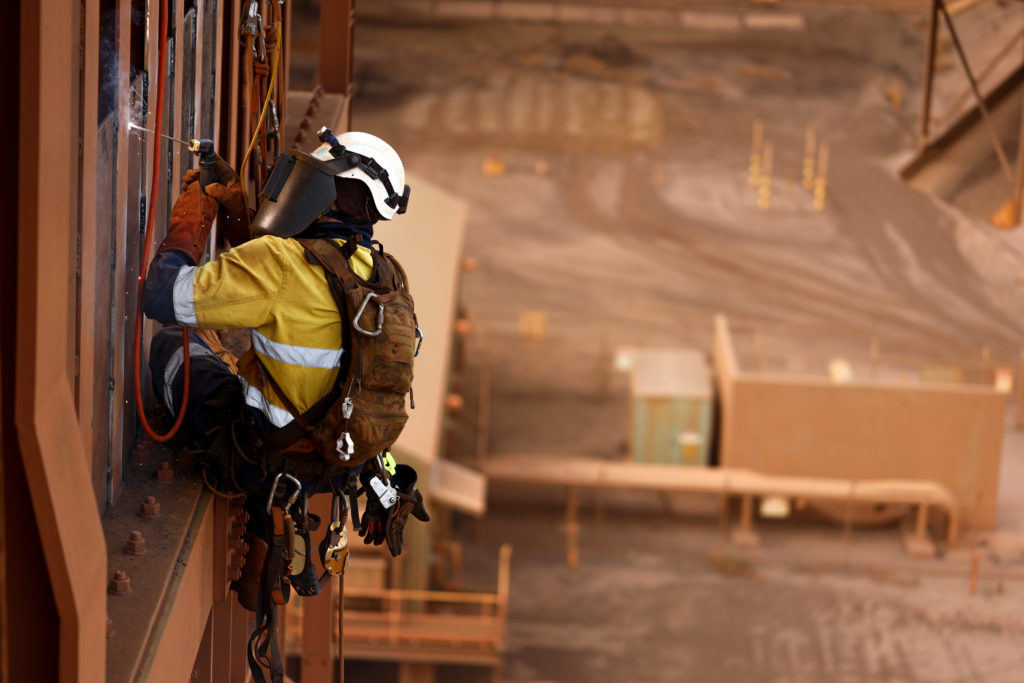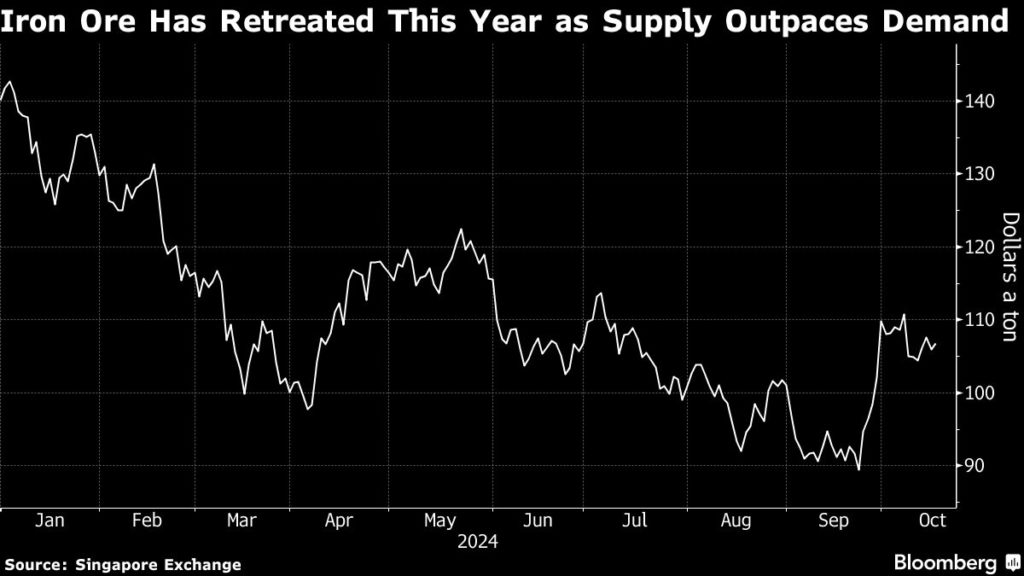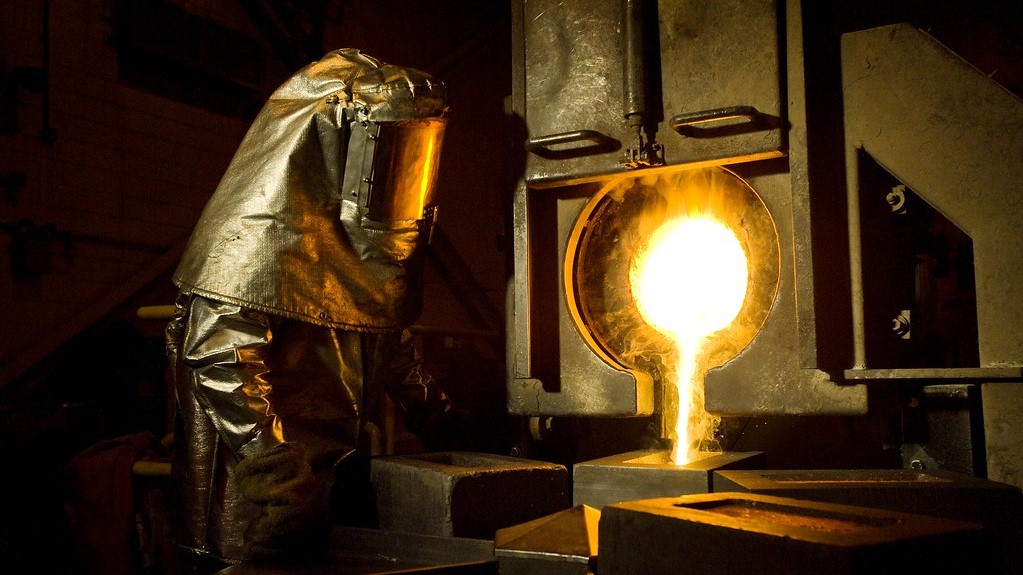World’s top two iron ore miners raise output even as China slows

The world’s two biggest suppliers of iron ore, Rio Tinto Group and Vale SA, raised output of the steelmaking material last quarter, even as demand from China faces headwinds due to the nation’s unresolved property crisis.
Rio’s third-quarter output edged up about 1% from a year earlier, while Brazil’s Vale beat estimates to churn out its highest volume since late-2018, ahead of a dam-collapse disaster that triggered years-long disruptions.
Iron ore demand in top buyer China remains at risk due to a slump in its metals-intensive property sector, although that’s been partially offset by some corners of the manufacturing industry as well as surging exports of steel. Iron ore futures are down nearly a quarter this year as supply outpaces demand.
“China’s economic recovery has been uneven, prompting more government support to sustain growth,” Rio said in its production report. “As the economy transitions from the property sector to new growth areas, future commodity demand will turn more reliant on advanced manufacturing, including electric vehicles, and power infrastructure.”

The world’s top iron ore miners continue to beef up supplies, with their large-scale operations safeguarded by per-ton costs that remain far below current spot levels. BHP Group Ltd., the third-biggest, reports its quarterly output on Thursday this week.
Vale’s production of 91 million tons for the quarter surpassed output from Rio Tinto’s mines in the Pilbara region at 84.1 million tons. Rio held its full-year guidance for iron ore at 323 million to 338 million tons, while Vale said it expects to produce between 323 million and 330 million tons.
“Cost pressures in the Pilbara continue to be a small headwind” for Rio, Jefferies analysts including Christopher LaFemina said in a note. Iron ore “should be a massive, underappreciated cash cow business for Vale,” he said in a separate note.
Rio’s shares were trading 1.8% lower in Sydney at 1:44 p.m. local time.
Support measures
The commodities world is closely watching what China does next to support its slowing economy, with all eyes on a briefing by the housing minister on Thursday which should give more detail on plans to tackle the housing slump. Steel demand in China is expected to fall 3% this year, according to the World Steel Association.
Meanwhile, Rio’s copper output in the quarter slipped 1% from the year before, while bauxite output rose 8% and aluminum was down 2%.
On copper, Rio said that “pent-up demand” in China returned in the third quarter, as fabricators held back from buying amid high prices in the prior period. “Demand in the rest of world was mixed, with strong performance in developed Asia offset by weakness in Europe,” it said.
More coming
Rio is ramping up production across its traditional iron ore and copper portfolio. Its largest project is the Simandou iron ore mine in Guinea, which will deliver first ore next year and ramp up to 60 million tons per annum soon after.
The London-based miner also said its $2 billion Western Range iron ore project in the Pilbara was 80% complete. Rio is undertaking studies of five other projects that would add another 40 million tons of supply.
Iron ore still accounts for around two-thirds of Rio’s revenue, but the group is diversifying into other commodities including lithium. Earlier this month, it announced a $6.7 billion takeover of Arcadium Lithium Ltd., marking its return to deal-making after more than a decade.
(By Paul-Alain Hunt)
More News
Rare earths recycler Cyclic Materials to invest over $20M in first commercial facility in the US
April 23, 2025 | 01:43 pm
{{ commodity.name }}
{{ post.title }}
{{ post.date }}


Comments